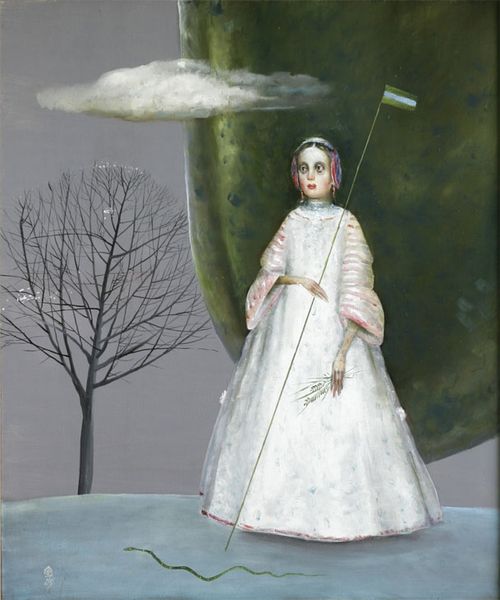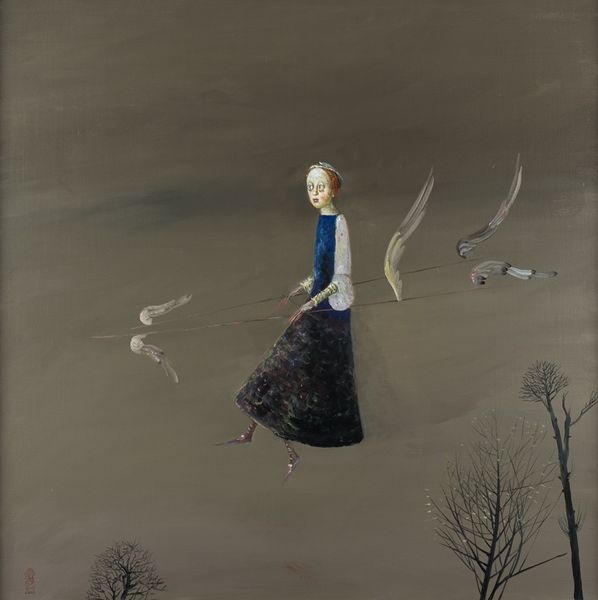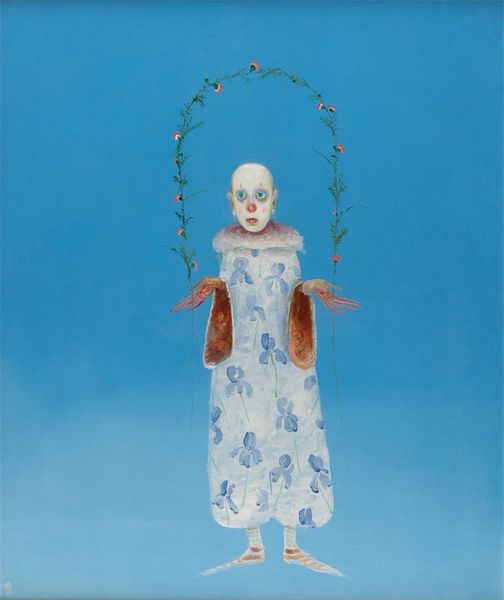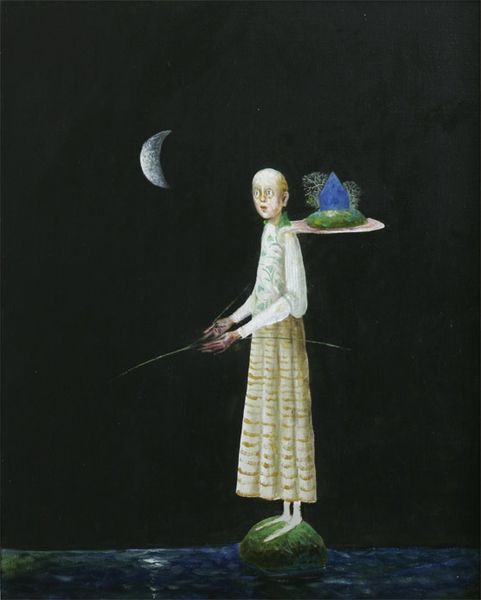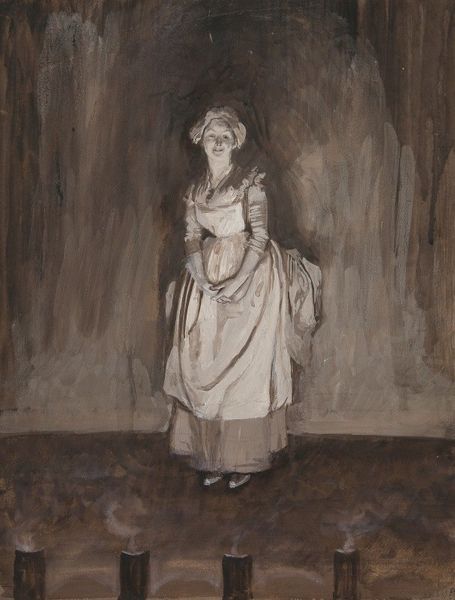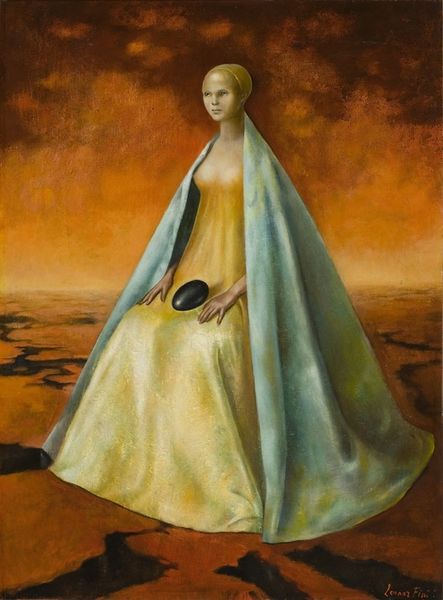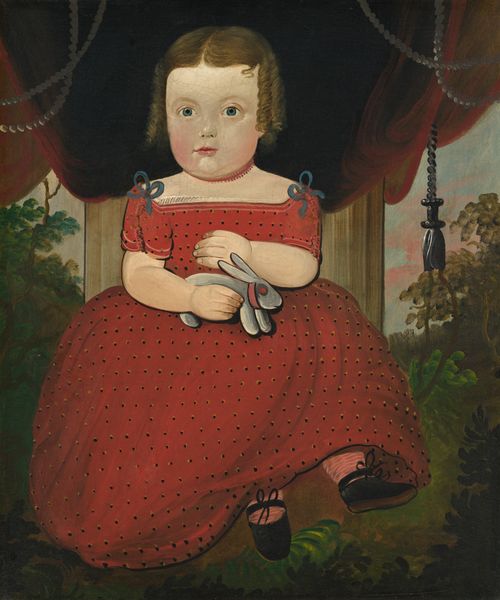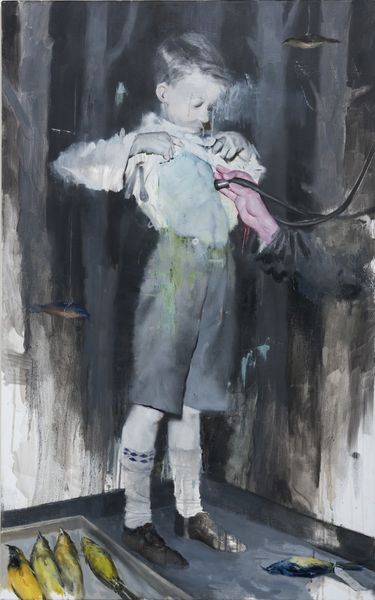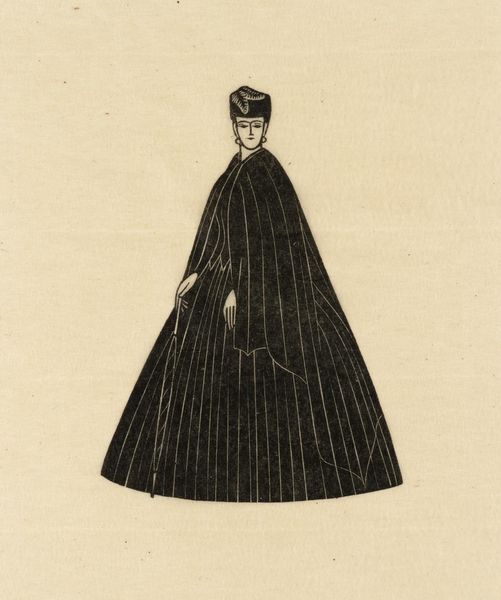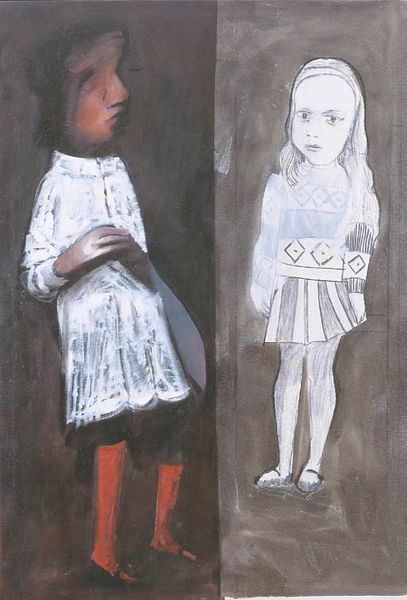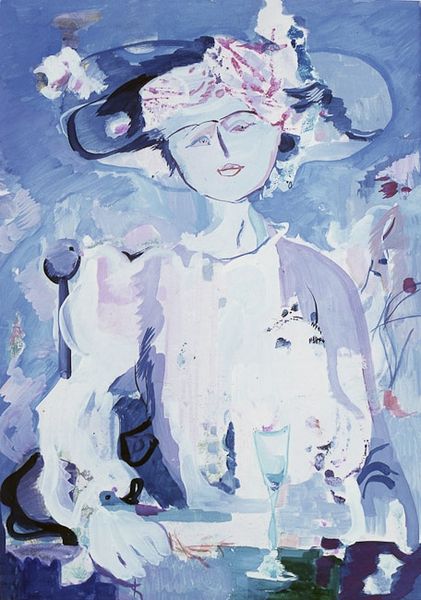
painting, oil-paint
#
portrait
#
contemporary
#
narrative-art
#
painting
#
oil-paint
#
figuration
#
oil painting
Copyright: Stefan Caltia,Fair Use
Editor: Here we have Stefan Caltia’s oil on canvas, "Girl With Crown," created in 2005. I'm immediately struck by the somber mood despite the crown of greenery, and the unsettlingly pale skin of the figure. How do you interpret the narrative being presented? Curator: That unsettling feeling, I think, is key. Caltia is consciously playing with portraiture traditions but subverting them. He presents us with a child in almost ceremonial attire, but there's a palpable sense of unease. Do you notice how the dark, almost abstract, background looms over her? Editor: Yes, it almost feels like a shadow or a looming presence. Curator: Exactly. And that stark contrast between the pristine white dress and the shadowy background speaks to a tension present within the social construct of innocence. This girl isn't necessarily *innocent*; rather, she is *performing* it. Caltia is hinting at the ways societal expectations burden and confine, particularly on young women. The "crown" itself is not bejeweled, as we would imagine for royalty. The wreath suggests connection to nature, perhaps naiveté. But doesn’t the stark presentation feel staged? Editor: It really does. So, you’re saying he's using the visual language of portraiture to critique those power structures? Curator: Precisely. Think about who traditionally gets their portrait painted and why. Caltia, in a contemporary context, flips that on its head by giving us this vulnerable yet unnerving subject. Editor: That's fascinating. I initially saw it as a fairly straightforward portrait, but the historical and social layers you’ve pointed out give it a whole new dimension. Curator: Art often reflects the anxieties of its time. Looking at Caltia’s work through that lens reveals a much richer and more complex narrative than what meets the eye.
Comments
No comments
Be the first to comment and join the conversation on the ultimate creative platform.
